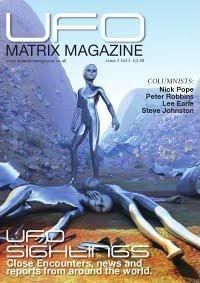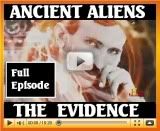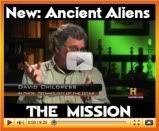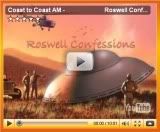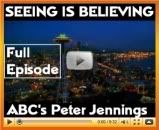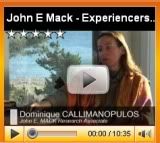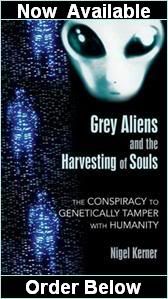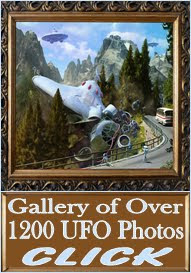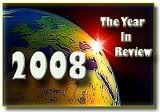Wednesday, December 7, 2011
EARTH'S TWIN? NASA's Kepler Mission Announces Latest Discovery
WATCH THIS ONE FIRST - THEN NASA VIDEO
The Kepler mission's science team announced its latest finding at a press conference on Monday, Dec. 5, 2011. The team announced the confirmation of Kepler-22b, its first planet found in the "habitable zone," the region where liquid water could exist on a planet's surface. The planet is about 2.4 times the radius of Earth, orbits around a star similar to our sun and is located 600 light-years away. Scientists don't yet know if Kepler-22b has a predominantly rocky, gaseous or liquid composition, but its discovery is a step closer to finding Earth-like planets. The planet's host star belongs to the same class as our sun, called G-type, although it is slightly smaller and cooler.
Kepler also has discovered 1,094 new planet candidates, nearly doubling its previously known count. Since the last catalog was released in February, the number of planet candidates identified by Kepler has increased by 89 percent and now totals 2,326. Of these, 207 are approximately Earth-size, 680 are super Earth-size, 1,181 are Neptune-size, 203 are Jupiter-size and 55 are larger than Jupiter. The findings, based on observations conducted May 2009 to September 2010, show a dramatic increase in the numbers of smaller-size planet candidates.
NASA
KEPLER-22B may be the most Earth-like world yet found in the galaxy — and it could be home to alien life.
It orbits a star like the Sun 600 light years — that's nearly 4,000BILLION MILES — away in the constellation Cygnus.
Importantly, the planet lies inside the habitable zone of its solar system, so-called because it is not too hot and not too cold for life to exist. Water — an essential requirement for life as we know it — would be a liquid.
Christmas would come around sooner there every year, because it takes just 290 days to go round its parent star.
Scientists cannot tell for sure yet whether Kepler-22b is a rocky world, a ball of gas or even a liquid object.
But its discovery, announced this week, suggests we're getting closer to discovering we're not alone in the universe.
The Kepler mission's science team announced its latest finding at a press conference on Monday, Dec. 5, 2011. The team announced the confirmation of Kepler-22b, its first planet found in the "habitable zone," the region where liquid water could exist on a planet's surface. The planet is about 2.4 times the radius of Earth, orbits around a star similar to our sun and is located 600 light-years away. Scientists don't yet know if Kepler-22b has a predominantly rocky, gaseous or liquid composition, but its discovery is a step closer to finding Earth-like planets. The planet's host star belongs to the same class as our sun, called G-type, although it is slightly smaller and cooler.
Kepler also has discovered 1,094 new planet candidates, nearly doubling its previously known count. Since the last catalog was released in February, the number of planet candidates identified by Kepler has increased by 89 percent and now totals 2,326. Of these, 207 are approximately Earth-size, 680 are super Earth-size, 1,181 are Neptune-size, 203 are Jupiter-size and 55 are larger than Jupiter. The findings, based on observations conducted May 2009 to September 2010, show a dramatic increase in the numbers of smaller-size planet candidates.
NASA
KEPLER-22B may be the most Earth-like world yet found in the galaxy — and it could be home to alien life.
It orbits a star like the Sun 600 light years — that's nearly 4,000BILLION MILES — away in the constellation Cygnus.
Importantly, the planet lies inside the habitable zone of its solar system, so-called because it is not too hot and not too cold for life to exist. Water — an essential requirement for life as we know it — would be a liquid.
Christmas would come around sooner there every year, because it takes just 290 days to go round its parent star.
Scientists cannot tell for sure yet whether Kepler-22b is a rocky world, a ball of gas or even a liquid object.
But its discovery, announced this week, suggests we're getting closer to discovering we're not alone in the universe.
Labels:
earths twin,
kepler 22b,
NASA
Tuesday, August 23, 2011
ALIEN ABDUCTION PIONEER BUDD HOPKINS PASSES AWAY
The Pioneer of Abduction Research
June 15, 1931 – August 21, 2011

I’m very sad to announce that Budd Hopkins died August 21, at 1:35 pm. Budd had been under hospice care for about three weeks, at his home in New York. The combination of liver cancer and pneumonia led to his death. His daughter Grace Hopkins-Lisle and I were with him almost continuously during these past weeks. He was not in any pain throughout any of the process, and he received the best possible care and loving support from those closest to him. Today he gradually slipped away, and simply quietly stopped breathing. He died peacefully and without any struggle, with Grace, Grace’s husband Andrew, and me by his side.
To learn more about Budd Hopkins watch the following video series.
http://aliencasebook.blogspot.com/2008/12/videos-true-stories-of-alien-encounters.html
Thursday, June 16, 2011
TEN NEW EXOPLANETS DISCOVERED BY EURO SATELLITE, CoRoT
Yes, I am still on hiatus however I found this worthy of posting immediately.
 The CoRoT spacecraft.
The CoRoT spacecraft.
Credit: CNES/D.Ducros
Ten new exoplanets have been discovered by the European satellite, CoRoT. Confirmed via meticulous, ground-based observations, these exoplanets exhibit a wide variety of masses, densities, orbital parameters and other properties, highlighting the broad diversity of planets around stars other than our Sun. The inventory includes seven hot Jupiters, a planet smaller than Saturn and a system of two Neptune-like objects orbiting the same star. The results have been announced today, 14 June 2011, at the Second CoRoT Symposium held this week in Marseille, France.
CoRoT is the first space mission dedicated to the search of planets outside our Solar System's realm. In more than 4 years of operations 26 new exoplanets have been discovered with CoRoT, bringing the total number of exoplanets known thus far to 565.
When the hunt for planets around stars other than the Sun began, over 15 years ago, achieving a detection was the primary goal of the field. After almost two decades of research, great technological progress, and the discovery of several hundred exoplanets, the focus has now shifted towards a more analytical approach. Astronomers exploit the joint power of dedicated space-based facilities, such as CoRoT, and high-quality data from the ground in order to pin down the characteristics of a large number of planets. With these data at hand, it is possible to tackle fundamental questions concerning how exoplanets form and what kind of objects emerge from the various formation scenarios. The new results, announced on 14 June 2011 at the Second CoRoT Symposium, highlight once again the diversity of the properties observed within the 'zoo' of exoplanets.
"Ever since the early days of exoplanet astronomy, we've been amazed by the variety of planets that have been discovered: gaseous giants larger than Jupiter and smaller, rocky bodies, down to masses comparable to the Earth's," notes Malcolm Fridlund, ESA's project scientist for CoRoT. The configurations of the systems are also highly diverse, with a wide range of orbital periods, and about 70 systems in which multiple planets have been detected. "The new set of ten planets that we announce today are no exception, exhibiting as they do a rich list of very interesting properties," he adds.
Of the most recent additions to the CoRoT family, seven are so-called 'hot Jupiters', one is smaller than Saturn (CoRoT-22b) and the other two (CoRot-24b and CoRot-24c), with masses similar to that of Neptune, have been found orbiting the same star. The densities of these planets, which are all gaseous, span a wide range, from values similar to that of Saturn, the least dense planet in the Solar System, to higher values comparable to the density of Mars.
The host stars also exhibit rather mixed properties, ranging from a ten thousand million year old star - twice as old as the Sun - in the case of CoRoT-17b, to a rather young (about 600 million years) counterpart, in the case of CoRoT-18b. Observing planetary systems with such different ages is particularly useful when testing different scenarios of planet formation and evolution. Two of the planets (CoRoT-16b and CoRoT-20b) lie on highly elongated orbits, and explaining their survival on such orbits represents a challenge from the dynamical point of view. The double system of Neptune-like bodies is rather peculiar, and it will be monitored in the future to determine if it harbours other planets as well.
Since its launch in 2006, CoRoT has detected several hundred candidate planet-hosting stars. Each of them has to undergo a scrupulous validating procedure, in order to assess whether or not the observations truly represent the detection of a planet. This relies on follow-up observations conducted with an extensive network of ground-based telescopes. Astronomers from the CoRoT team, including a number of ESA researchers, collect a wealth of photometric and spectroscopic data in order to confirm that the detections are actually due to a planet and, in that case, to measure the parameters of the systems.
"Although the study of exoplanets is relatively young, we have already reached a stage where we can characterise the details of worlds orbiting other stars, and CoRoT is making a crucial contribution to this field," comments Fridlund. "With hundreds of systems observed to date, we no longer have to worry about 'taming the beasts' and we can dedicate our efforts to the 'zoology' of exoplanets, which is enormously enhancing our knowledge about planetary systems," he concludes.
Notes for editors
Since 1995, astronomers have discovered over 565 exoplanets by employing a number of techniques, including astrometry, radial velocity, the transit method, gravitational microlensing and direct imaging.
CoRoT is a 27-cm space telescope that searches for exoplanets with the transit method, which measures the tiny decrease in brightness when an object, such as a planet, passes in front of a star. Since its launch in December 2006, CoRoT has found 26 confirmed extrasolar planets. The number of possible extrasolar planets detected by CoRoT is even larger: 401 possible planet candidates detected with the telescope are in the process of being confirmed.
The CoRoT space mission is led by the French space agency CNES (Centre national d'études spatiales) with support from the European Space Agency (ESA), Austria, Belgium, Germany (DLR), Spain, and Brazil.
ESA has joined the mission by providing the optics and baffle for the telescope and testing of the payload. Through this collaboration a number of European scientists, from Denmark, Switzerland, the United Kingdom and Portugal, have been selected as Co-Investigators in open competition. As a result of ESA's participation in CoRoT, scientists from ESA's Member States also have access to the satellite's data.
ESA's Research and Scientific Support Department (RSSD) at ESTEC is a full partner in CoRoT by providing the on-board Data Processing Units (DPU's). The ESA PRODEX programme has supported the development of the CoRoT telescope baffle, and the software development and data processing of CoRoT light curves.
The ground stations used for CoRoT are located in Kiruna (S), Aussaguel (F) Hartebeesthoek (South Africa), and Kourou (French Guyana), with mission-specific ground stations in Alcantara (Brazil) and Vienna (A).
Data from CoRoT can only determine the radius of the planet. The measurement of the planetary mass requires observations from the ground using the Doppler wobble method. Additional measurements from the ground are also required to exclude other phenomena that may mimic a transit signal. Several ESA researchers are involved in the follow-up, analysis and interpretation of CoRoT data.
Source: European Space Agency
http://www.esa.int/esaCP/index.html
 The CoRoT spacecraft.
The CoRoT spacecraft.Credit: CNES/D.Ducros
Ten new exoplanets have been discovered by the European satellite, CoRoT. Confirmed via meticulous, ground-based observations, these exoplanets exhibit a wide variety of masses, densities, orbital parameters and other properties, highlighting the broad diversity of planets around stars other than our Sun. The inventory includes seven hot Jupiters, a planet smaller than Saturn and a system of two Neptune-like objects orbiting the same star. The results have been announced today, 14 June 2011, at the Second CoRoT Symposium held this week in Marseille, France.
CoRoT is the first space mission dedicated to the search of planets outside our Solar System's realm. In more than 4 years of operations 26 new exoplanets have been discovered with CoRoT, bringing the total number of exoplanets known thus far to 565.
When the hunt for planets around stars other than the Sun began, over 15 years ago, achieving a detection was the primary goal of the field. After almost two decades of research, great technological progress, and the discovery of several hundred exoplanets, the focus has now shifted towards a more analytical approach. Astronomers exploit the joint power of dedicated space-based facilities, such as CoRoT, and high-quality data from the ground in order to pin down the characteristics of a large number of planets. With these data at hand, it is possible to tackle fundamental questions concerning how exoplanets form and what kind of objects emerge from the various formation scenarios. The new results, announced on 14 June 2011 at the Second CoRoT Symposium, highlight once again the diversity of the properties observed within the 'zoo' of exoplanets.
"Ever since the early days of exoplanet astronomy, we've been amazed by the variety of planets that have been discovered: gaseous giants larger than Jupiter and smaller, rocky bodies, down to masses comparable to the Earth's," notes Malcolm Fridlund, ESA's project scientist for CoRoT. The configurations of the systems are also highly diverse, with a wide range of orbital periods, and about 70 systems in which multiple planets have been detected. "The new set of ten planets that we announce today are no exception, exhibiting as they do a rich list of very interesting properties," he adds.
Of the most recent additions to the CoRoT family, seven are so-called 'hot Jupiters', one is smaller than Saturn (CoRoT-22b) and the other two (CoRot-24b and CoRot-24c), with masses similar to that of Neptune, have been found orbiting the same star. The densities of these planets, which are all gaseous, span a wide range, from values similar to that of Saturn, the least dense planet in the Solar System, to higher values comparable to the density of Mars.
The host stars also exhibit rather mixed properties, ranging from a ten thousand million year old star - twice as old as the Sun - in the case of CoRoT-17b, to a rather young (about 600 million years) counterpart, in the case of CoRoT-18b. Observing planetary systems with such different ages is particularly useful when testing different scenarios of planet formation and evolution. Two of the planets (CoRoT-16b and CoRoT-20b) lie on highly elongated orbits, and explaining their survival on such orbits represents a challenge from the dynamical point of view. The double system of Neptune-like bodies is rather peculiar, and it will be monitored in the future to determine if it harbours other planets as well.
Since its launch in 2006, CoRoT has detected several hundred candidate planet-hosting stars. Each of them has to undergo a scrupulous validating procedure, in order to assess whether or not the observations truly represent the detection of a planet. This relies on follow-up observations conducted with an extensive network of ground-based telescopes. Astronomers from the CoRoT team, including a number of ESA researchers, collect a wealth of photometric and spectroscopic data in order to confirm that the detections are actually due to a planet and, in that case, to measure the parameters of the systems.
"Although the study of exoplanets is relatively young, we have already reached a stage where we can characterise the details of worlds orbiting other stars, and CoRoT is making a crucial contribution to this field," comments Fridlund. "With hundreds of systems observed to date, we no longer have to worry about 'taming the beasts' and we can dedicate our efforts to the 'zoology' of exoplanets, which is enormously enhancing our knowledge about planetary systems," he concludes.
Notes for editors
Since 1995, astronomers have discovered over 565 exoplanets by employing a number of techniques, including astrometry, radial velocity, the transit method, gravitational microlensing and direct imaging.
CoRoT is a 27-cm space telescope that searches for exoplanets with the transit method, which measures the tiny decrease in brightness when an object, such as a planet, passes in front of a star. Since its launch in December 2006, CoRoT has found 26 confirmed extrasolar planets. The number of possible extrasolar planets detected by CoRoT is even larger: 401 possible planet candidates detected with the telescope are in the process of being confirmed.
The CoRoT space mission is led by the French space agency CNES (Centre national d'études spatiales) with support from the European Space Agency (ESA), Austria, Belgium, Germany (DLR), Spain, and Brazil.
ESA has joined the mission by providing the optics and baffle for the telescope and testing of the payload. Through this collaboration a number of European scientists, from Denmark, Switzerland, the United Kingdom and Portugal, have been selected as Co-Investigators in open competition. As a result of ESA's participation in CoRoT, scientists from ESA's Member States also have access to the satellite's data.
ESA's Research and Scientific Support Department (RSSD) at ESTEC is a full partner in CoRoT by providing the on-board Data Processing Units (DPU's). The ESA PRODEX programme has supported the development of the CoRoT telescope baffle, and the software development and data processing of CoRoT light curves.
The ground stations used for CoRoT are located in Kiruna (S), Aussaguel (F) Hartebeesthoek (South Africa), and Kourou (French Guyana), with mission-specific ground stations in Alcantara (Brazil) and Vienna (A).
Data from CoRoT can only determine the radius of the planet. The measurement of the planetary mass requires observations from the ground using the Doppler wobble method. Additional measurements from the ground are also required to exclude other phenomena that may mimic a transit signal. Several ESA researchers are involved in the follow-up, analysis and interpretation of CoRoT data.
Source: European Space Agency
http://www.esa.int/esaCP/index.html
Tuesday, May 24, 2011
Monday, February 28, 2011
MOVIE - THE PUPPET MASTERS
Donald Sutherland leads a team of top-level government agents who make a chilling discovery: extraterrestrial beings have landed.








Apr 2010 Mar 2010 Feb 2010 Jan 2010 Dec 2009 Nov 2009 Oct 2009 Sept 2009
Aug 2009 July 2009 June 2009 May 2009 Apr 2009 Mar 2009 Feb 2009 Jan 2009
Dec 2008 Nov 2008 Oct 2008 Sept 2008 Aug 2008 July 2008 June 2008



Apr 2010 Mar 2010 Feb 2010 Jan 2010 Dec 2009 Nov 2009 Oct 2009 Sept 2009
Aug 2009 July 2009 June 2009 May 2009 Apr 2009 Mar 2009 Feb 2009 Jan 2009
Dec 2008 Nov 2008 Oct 2008 Sept 2008 Aug 2008 July 2008 June 2008

Labels:
The Puppet Masters
Thursday, January 6, 2011
RE: MAC TONNIES POST-MAC-BLUES
No, I am still in hiatus in regards to blogging however, I received something in an email this evening that I thought many of you would like to see.
I'm essentially going to send you to two addresses, since I think you might like to bookmark both of them. The first address will lead you to a second, which will then address an article that is going to be published in the New York Times about Mac and his online legacy.
Here is the first address. Click on the macbots link.
macbots
Once in, bookmark that blog you're in for a looksee someday and then click on the highlighted link in the only paragraph called POST-MAC-BLUES.
When it opens, it will then be self explanatory and provide the link you'll need in order to read the New York Times article now, which will not be published in the paper until January 9th.
On another note, I am working now. I got a Job at Marshalls. Nothing earth shattering $$ wise but at least I'm working. As well as working for them, I invested in a WordPerfect for DOS and will soon be typing Court reports (at home of all things) for an attorney service. It's a pay for page kind of thing so that means I'll be typing my fingers to the bones in order to make ends meet while I continue working for Marshalls.
What's really killing me are the gas prices. I'm having to drive 45 minutes to and from work each day. Our gas here in Cook County, IL is currently $3.39 a gallon. Ouch! I swear, I think I'm working for the petroleum companies sometimes. lol
Anyway, please read the New York Times article. It's very, very interesting and I am ecstatic that they used Mac as their example for that article. It's quite a few pages long but a very good read about what happens to our online work if we suddenly die such as Mac did at 34 years old.
Eileen (aka: Atrueoriginall)
I'm essentially going to send you to two addresses, since I think you might like to bookmark both of them. The first address will lead you to a second, which will then address an article that is going to be published in the New York Times about Mac and his online legacy.
Here is the first address. Click on the macbots link.
macbots
Once in, bookmark that blog you're in for a looksee someday and then click on the highlighted link in the only paragraph called POST-MAC-BLUES.
When it opens, it will then be self explanatory and provide the link you'll need in order to read the New York Times article now, which will not be published in the paper until January 9th.
On another note, I am working now. I got a Job at Marshalls. Nothing earth shattering $$ wise but at least I'm working. As well as working for them, I invested in a WordPerfect for DOS and will soon be typing Court reports (at home of all things) for an attorney service. It's a pay for page kind of thing so that means I'll be typing my fingers to the bones in order to make ends meet while I continue working for Marshalls.
What's really killing me are the gas prices. I'm having to drive 45 minutes to and from work each day. Our gas here in Cook County, IL is currently $3.39 a gallon. Ouch! I swear, I think I'm working for the petroleum companies sometimes. lol
Anyway, please read the New York Times article. It's very, very interesting and I am ecstatic that they used Mac as their example for that article. It's quite a few pages long but a very good read about what happens to our online work if we suddenly die such as Mac did at 34 years old.
Eileen (aka: Atrueoriginall)
Labels:
Mac Tonnies,
New York Times
Subscribe to:
Comments (Atom)


